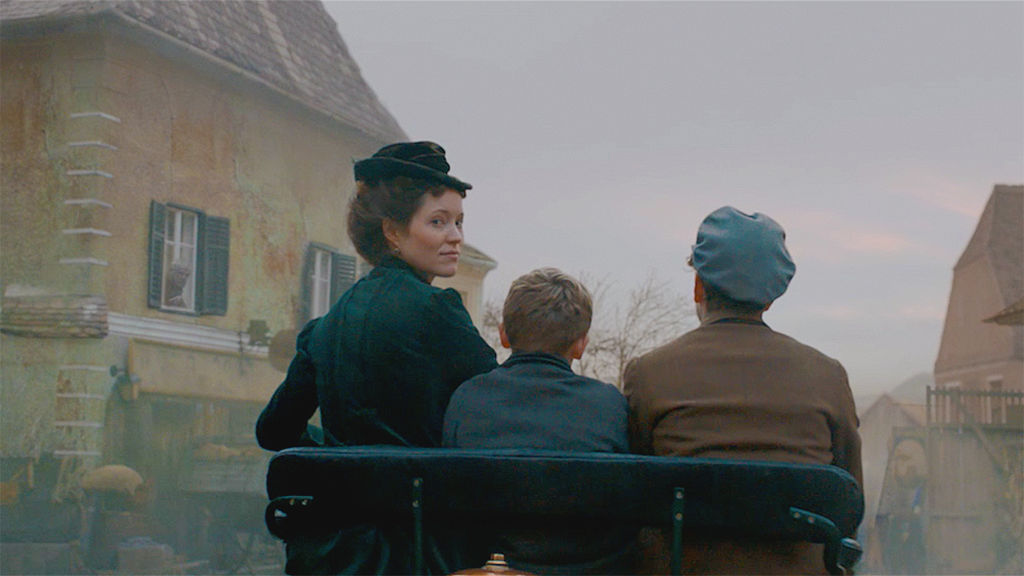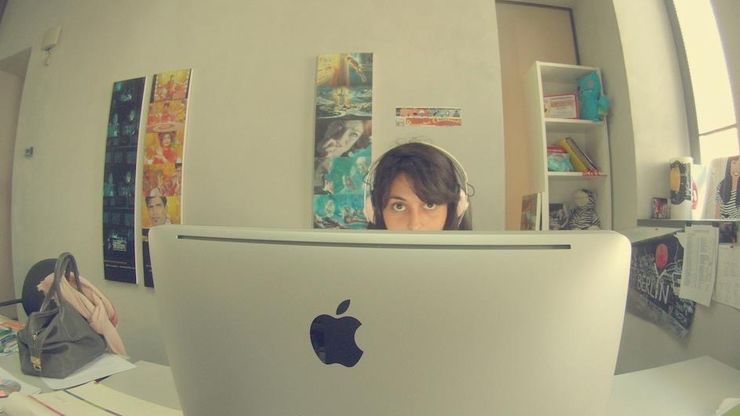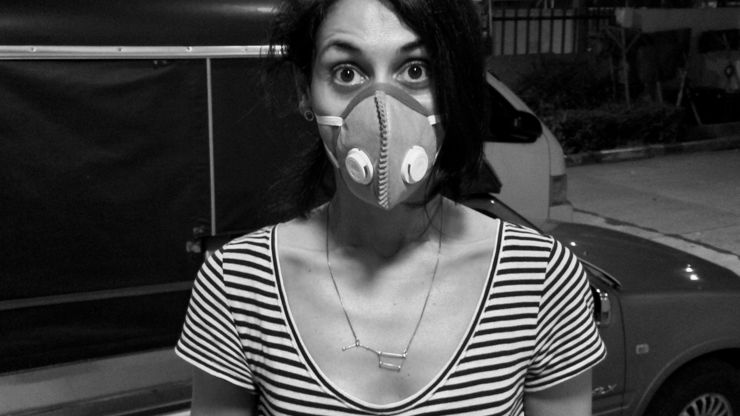Alice Bottaro: Creative journeys and changing everything
One of the greatest heroes of the automotive industry was a women - a fact that few people outside of the historically male-dominated sector knew about until Mercedes-Benz launched its film about Bertha Benz this year. Through this campaign and more, Alice Bottaro, Creative Director at antoni, Berlin, is helping Mercedes-Benz connect with a female audience in a job that she considers to be the best in the world.
It was in a small village in Italy, during her first job in the field, that Alice Bottaro realised she would make a terrible anthropologist.
“I was always too emotionally involved,” she says. “You need to maintain a safe distance to study people properly. If you get too emotionally engaged, you bias yourself.”
After growing up in Rome, Bottaro had completed her degree in anthropology and had been planning to continue her studies. During an internship at McCann’s outpost in the city, she realised that advertising better suited her as it allowed her to combine her love for studying people with her creative talents.
Connecting better with women is something we’ve developed a sensitivity for and consider in each and every campaign we do. It shouldn’t be something special.
“My studies taught me to observe thought patterns and how people behave, giving me an interesting perspective on the job. In the end it’s all about people, right?” she says.
And, unlike in anthropological study, her emotional sensitivity was useful when it came to writing ads.
During those first years in the industry, Bottaro was her agency’s only junior copywriter and was able to learn a lot from her colleagues. “They were very established, knowledgeable copywriters and were incredibly generous and patient with me,” she says.
Above: Bottero in the beginnings of her career, including [l-r] her first office in McCann Rome (2011), Backstage at a Sony a6000 shooting in Ingolstadt, Germany, and two pics from a Sony Bravia fireworks shoot in Bangkok (2015).
After three years she moved to DDB Berlin, where she had the chance to work on bigger and global accounts. In the end, after helping the agency win more and more international clients such as Sony, she and her then creative partner Veit Moeller helped to build a new corner of the agency. Bottaro explains, “We slowly started gaining more international accounts and creatives, creating this new unit to take care of global clients from scratch.”
I thought that as a non-German woman, I’d have a different perspective that might be interesting.
She picked up several awards along the way, too. Her Wifi Dogs campaign for Telekom - the piece of work she’s most proud of from this time - picked up two Bronze Lions at Cannes 2015 and the Grand Prix at the Euro Effies. The mockumentary shows optimistic business owners José and Santiago explaining how they are training wifi-sniffer dogs to rent to internet-hungry tourists. “Hopefully this is going to be the business of the century,” says José during the tour of his headquarters, as a wifi-sniffing poodle humps a car tyre behind him.
“Don’t waste your holidays looking for wifi” reads the endline.
Telekom – Jose´s Wi-Fi Dogs
Deutsche Telekom – Wi Fi Dogs: Case Study
Around two years into her stint at DDB Berlin, Bottaro’s boss Matthias Schmidt promoted to her to Creative Director. “He was the one that believed in me,” says Bottaro. “You need to have someone that supports you and helps you grow. He has been that figure for me.” Further testifying his beliefs in her talent, when Schmidt moved to antoni to work on the agency’s Mercedes-Benz account he asked her to join him.
Bottaro was initially hesitant about the offer. “I thought it was going to be a very male environment,” says Bottaro. “It’s like the Champions League of German advertising and I didn’t have any prior automotive experience. But in the end it was these two things that convinced me. I thought that as a non-German woman, I’d have a different perspective that might be interesting.”
I really see Bertha Benz as a role model for modern women. We can learn from her resilience, stubbornness and the fact that she didn’t give up on her vision.
She was right, and her lack of experience in automotive also helped make the Bertha Benz work happen. While everyone at Mercedes-Benz knew and cherished the story of Bertha Benz, Bottaro had never heard of her before and suspected that most people outside of the auto industry hadn’t either.
Credits
powered by
- Agency Antoni/Berlin
- Production Company Anorak Film
- Director Sebastian Strasser
-
-
Unlock full credits and more with a Source + shots membership.
Credits
powered by
- Agency Antoni/Berlin
- Production Company Anorak Film
- Director Sebastian Strasser
- Production Service Icon Films
- Editor Trim
- Editor Slaughterhouse
- Sound Slaughterhouse
- Post Production The Mill/London
- Creative Director Marcell Francke
- Creative Director Tilman Gossner
- Creative Director Veit Moeller
- Creative Director Alice Bottaro
- Senior Producer Sebastiaan Peters
- Producer Marcus Wetschewald
- Executive Producer Christoph Petzenhauser
- DP Justin Brown
- Colorist Benedikt Hugendubel
- Producer Raife Burchell
- Sound Designer Florian Kruse
- VFX Supervisor Dan Williams / UK (Creative Director)
- 2D Lead Carl Norton

Credits
powered by
- Agency Antoni/Berlin
- Production Company Anorak Film
- Director Sebastian Strasser
- Production Service Icon Films
- Editor Trim
- Editor Slaughterhouse
- Sound Slaughterhouse
- Post Production The Mill/London
- Creative Director Marcell Francke
- Creative Director Tilman Gossner
- Creative Director Veit Moeller
- Creative Director Alice Bottaro
- Senior Producer Sebastiaan Peters
- Producer Marcus Wetschewald
- Executive Producer Christoph Petzenhauser
- DP Justin Brown
- Colorist Benedikt Hugendubel
- Producer Raife Burchell
- Sound Designer Florian Kruse
- VFX Supervisor Dan Williams / UK (Creative Director)
- 2D Lead Carl Norton
Bottaro saw several reasons to spread the story as far and wide as possible. “I really see Bertha Benz as a role model for modern women. We can learn from her resilience, stubbornness and the fact that she didn’t give up on her vision,” she says. “She had this pioneering attitude that can be equally inspiring for men, as well.” Not only did Bertha Benz drive for 12 hours in her husband’s car without telling him, but she overcame several problems along the way, from cleaning a blocked fuel line with her hat pin to repairing the ignition wire with her garter – moments woven gracefully into the film.
Bottaro also saw that making the brand more appealing to a female audience was a big opportunity. Firstly, 80% of car purchases are influenced by women, but few auto brands have spoken to them directly before.
[Mercedes Benz is] a brand that’s inherently cool and has this pop culture credibility. So we decided to expand on that and make the most of it.
Along with the financial incentives, connecting with women was an opportunity for Mercedes-Benz to reinforce its cultural relevance. “There are so many interesting things happening in the female world, that not being in touch with women makes your brand less relevant,” she says. “Mercedes-Benz already has a strong presence in culture – just look at how present the brand is in hip hop music. It’s a brand that’s inherently cool and has this pop culture credibility. So we decided to expand on that and make the most of it.”

Above: Behind the scenes on The Journey That Changed Everything, on location in Romania.
Launching on International Women’s Day 2019, Bertha Benz: The Journey That Changed Everything depicts the eponymous heroine’s courageous, long-distance test-drive in her husband’s vehicle, a journey that proved to him and the rest of the world the potential of the automobile. The film has been viewed more than 7 million times and scooped awards at Cannes Lions, Gerety and D&AD.
The Bertha Benz film is just one of several new pieces of work from automaker that feature strong female characters, such as the ad for The Mercedes-Benz A-Class featuring Nicki Minaj or In The Long Run – the film for the new GLE. “Connecting better with women is something we’ve developed a sensitivity for and consider in each and every campaign we do,” says Bottaro. “It shouldn’t be something special.”
Automotive is an environment that has a traditionally male history, but in my experience it’s very keen to open up and embrace different perspectives.
Far from encountering the old boys club she anticipated, Bottaro found that Mercedes-Benz supports a gender balanced environment, with several women in high powered positions, including Bettina Fetzer, Vice President Marketing Mercedes-Benz Passenger Cars at Daimler AG and Daimler’s Marketing & Sales Board Member Britta Seeger. “Automotive is an environment that has a traditionally male history, but in my experience it’s very keen to open up and embrace different perspectives,” she says.
Credits
powered by
- Agency Antoni/Berlin
- Production Company Tempomedia Filmproduktion Berlin
- Director Brian Beletic
-
-
Unlock full credits and more with a Source + shots membership.
Credits
powered by
- Agency Antoni/Berlin
- Production Company Tempomedia Filmproduktion Berlin
- Director Brian Beletic
- Art Director Wolfgang Warzilek
- Copywriter Erick Barrios
- Copywriter Andre Santa Cruz
- Creative Director Alice Bottaro
- Exec Creative Director Tilman Gossner
- Exec Creative Director Veit Moeller
- Producer Mark Rota
- Senior Art Director Daniel Righi
- Production Co. SMUGGLER/London
- Post Production NHB Studio
- Grading MPC/London
- CGI Mackevision
- Music Budde Music
- DP Tom Craig
- Editor Sam Ostrove
- Sound Design Wenke Kleine-Benne
- Music Seth Olinsky
- Talent Nicki Minaj
- Art Director Yann Fischels

Credits
powered by
- Agency Antoni/Berlin
- Production Company Tempomedia Filmproduktion Berlin
- Director Brian Beletic
- Art Director Wolfgang Warzilek
- Copywriter Erick Barrios
- Copywriter Andre Santa Cruz
- Creative Director Alice Bottaro
- Exec Creative Director Tilman Gossner
- Exec Creative Director Veit Moeller
- Producer Mark Rota
- Senior Art Director Daniel Righi
- Production Co. SMUGGLER/London
- Post Production NHB Studio
- Grading MPC/London
- CGI Mackevision
- Music Budde Music
- DP Tom Craig
- Editor Sam Ostrove
- Sound Design Wenke Kleine-Benne
- Music Seth Olinsky
- Talent Nicki Minaj
- Art Director Yann Fischels
Bottaro is working to empower women within her industry too, and in 2015 set up the Berlin arm of creative network SheSays.
“There is a need for women to be able to exchange opinions, ask for advice and find a role model,” says Bottaro. “I’ve learned that we should see other females as a help and not something to be afraid of. For a very long time, we’ve thought there is space for just one of us at the top. We’ve been considering all other women as possible competitors. I think this is incredibly silly and self-destructive.”
Through networks like SheSays, which help women help each other, both the womens’ careers and gender equality generally can progress more quickly.
“Seeing other women as a support group is how you can really make change happen,” says Bottaro.
“Plus, it’s much more fun.”
)








 + membership
+ membership









